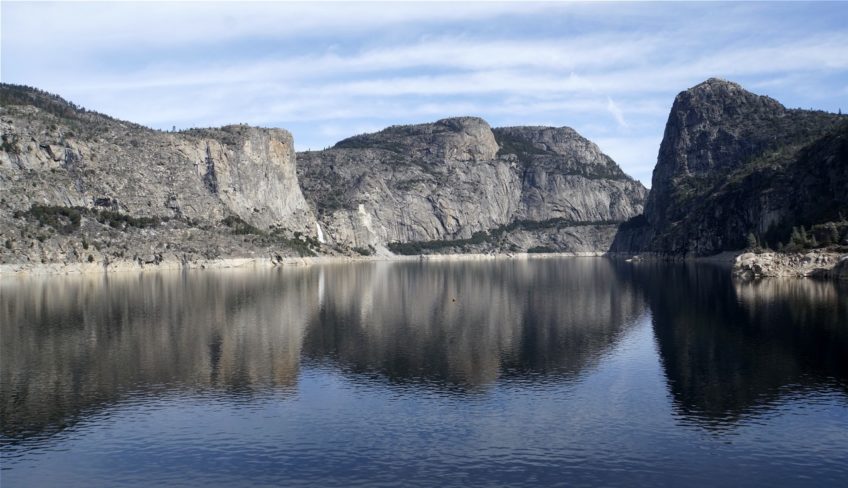Although I think we sometimes lose sight of its importance as we move through our fast-paced, lives flooded with artificial light, there is something undeniably inviting about patiently watching the day draw to a close as the sun slowly drops below the horizon. For me, the sun’s inevitable descent each night provides closure, just as its rise signals opportunity each morning. While it might not necessarily mean closure for my day, it calls the natural day to a close. It triggers rest for most living creatures, while simultaneously breathing life into the nocturnal beings that hide from its rays during the day. It reminds us of the biological rhythm of our lives.
Our species, however, has effectively distanced themselves from that rhythm. Alarm clocks, fluorescent lights, and LCD screens entice us into creating our own, personal schedule, which need not coincide with the rhythm of our plant or solar system. At this point, our reliance on technology to extend or structure our day is almost ubiquitous. That desire to eek as much productivity out of each day, however, has not entirely erased our appreciation for the beauty of our planet’s cyclical nature. Each day begins and ends with a sometimes spectacular, sometimes muted display of refracted light, an event that continues to amaze even today. My time in Yosemite reminded me of the almost universal sense of wonder that humans find inescapably hidden within each sunset or sunrise.
Filled with an overwhelming sense of calm and serenity after experiencing the sunset from Tunnel View, I returned to Camp 4 after my day of wandering Yosemite’s existing and historic human infrastructure. There, I found a healthy fire crackling happily near my tent. Just as I had been drawn to the sunset, I ended up being sucked into the glowing embers, dancing flames, and curling smoke that have always captivated me. Around the fire, I met David and Leo. The communal spirit of Camp 4 quickly worked its magic on us. We talked for what felt like hours, wandering between discussions of our food system, stories from our different paths through life, and our reflections on the Yosemite Valley. As the shadows of night deepened around us, the flicker of the flames dwindled, calling us lazily back to our tents and the ever-welcoming embrace of sleep.
In the morning, we rekindled the fire, casually preparing breakfast and discussing our plans for the day. I was teetering between a hike up to another set of waterfalls in the valley or visiting the infamous Hetch Hetchy valley and reservoir. Eventually, I opted for Hetch Hetchy and the journey south towards Kings Canyon and Sequoia National Parks. For the first time on my trip, I had contracted some sort of illness. Stuffed up and lethargic, I hoped that transitioning away from the vast temperature swings of the valley floor would still my restless immune system.

Luckily, my excitement at the possibility of seeing Hetch Hetchy outweighed the annoyance of my newfound illness. John Muir, one of America’s most well known environmentalists, dedicated his life to the preservation of Yosemite Valley and its environs. In 1903, he ushered president Theodore Roosevelt through the groves of giant sequoia trees in Mariposa, hiked over Glacier Point, and rode across Bridalveil Meadow in the Yosemite Valley. He passionately argued the case for the protection of this land that he cared for so deeply. Yosemite was his “sanctum sanctorum” and the pinnacles and domes of the valley were as cathedrals to him. Just three years after their fateful camping trip in Yosemite, the federal government assumed control of Yosemite Valley and the Mariposa Grove, welcoming them into Yosemite National Park. This simple legal process united the disparate parts of Yosemite.

Muir’s elation over the transition of those sections from state to federal control, however, was incredibly short-lived. Just two months before Roosevelt signed the Yosemite Recession Act, uniting the lands that comprise Yosemite National Park, San Francisco had suffered one of the worst earthquakes in American history. The initial quake ruptured gas mains, igniting fires that would rage through the city for the next four days. The cities ability to combat those fires relied on a water supply that simply could not meet the extreme demand created by the quake. After the fires burnt out, San Francisco’s infrastructure needed rebuilding and its water supply needed reevaluating. Urban planners turned their attention on Hetch Hetchy, an isolated section of Yosemite National Park whose canyon walls perfectly met the needs of dam builders. To Muir, the sheer granite walls of Hetch Hetchy and crystalline water of the Tuolumne River served as a reminder of the sublimity of nature. To the public works administration, they represented the bathtub-like walls of San Francisco’s newest cistern.

In the wake of the earthquake and subsequent fire that so devastated San Francisco, John Muir’s efforts to mobilize a public outcry against the creation of a reservoir in Hetch Hetchy fell short of their mark. In 1913, Woodrow Wilson signed the Raker Act, authorizing a process that would lead to the creation of the O’Shaughnessy Dam. This pivotal moment marked the development of a National Park for public use, something that many environmentalists, Muir especially, vehemently opposed. Despite the flooding of Hetch Hetchy, the mobilization for its protection heightened public support for the preservation of natural spaces. That movement eventually led to the creation of the National Park Service in 1916. As environmentalists began shifting their focus elsewhere, the O’Shaugnessy Dam (completed in 1923) began shuttling water towards San Francisco in 1934. Although the dam and its infrastructure have been updated over the years, this basic system continues to provide water for millions of residents in the Bay Area.

The fight for Hetch Hetchy represents a watershed moment for the American environmentalist movement. It moved conservation from the obscurity of political pandering to the forefront of popular debate. The martyrdom of Hetch Hetchy paved the way for the creation of the National Park Service, the stewards of some of our most sacred natural spaces. Who knows whether or not Muir ever made peace with that sacrifice, but it changed the environmentalist conversation in ways that continue to shape American conservation ethic.

Well aware of the controversies at play, I couldn’t wait to explore Hetch Hetchy for myself. As I drove north, I left behind the crowds and relative chaos of Yosemite Valley. Alone on the road, I snaked along switchbacks and over ridges until I reached the Hetch Hetchy. The dam and the reservoir behind shimmered in and out of focus as boulders and rolling hills obscured my line of sight.
Before long, I was standing in the middle of the O’Shaughnessy Dam, gazing into the calm waters filling the Hetch Hetchy valley. The comparisons to Yosemite Valley are well deserved. The smooth granite cliffs and towering pinnacles conjure similar emotions of awe and reverence. Behind me, that same water tumbled down the spillway, filling the otherwise silent air with the soft sound of rushing water. It took no stretch of my imagination to understand why Muir had fought so hard to protect this place. Yet, the reservoir before me had a different kind of beauty.

As I walked along the reservoir, I couldn’t help but be seduced by the beauty of the valley. An overwhelming sense of calm hung heavy in the air. Very little moved, save the occasional swooping bird. The reflections of the peaks shimmered, but never wavered. What lay at the bottom of this serene body of water? I had to rely on my imagination for that thought experiment. Eventually, I began to compare the valleys of Yosemite and Hetch Hetchy. Muir was right. They were similar. The similarity I kept coming back to, however, was quite different than Muir’s realization about their incalculable natural beauty. I kept bumping up against this unanswerable question: If part of the debate surrounding the flooding of the Hetch Hetchy dealt directly with the development of public land for public use, then I wonder what Muir would have thought about the network of human development spreading across Yosemite Valley…




3 Responses
Spreck Rosekrans
Restore Hetch Hetchy a non-profit organization with a sole purpose: to return the Hetch Hetchy Valley in Yosemite National Park to its natural splendor ─ while continuing to meet the water and power needs of all communities that depend on the Tuolumne River.
The damming and sacrifice of Hetch Hetchy valley is widely regarded as a mistake. What is less known is that multiple studies have shown that, with system improvements and modest additional investment, San Francisco can reoperate its water system so that Hetch Hetchy is not needed to store water and the valley can therefore be restored.
San Francisco has been unwilling to even consider restoration, so we have taken our case to the California courts. Learn more on our website. This is a mistake we can fix!
Don Hughes
I had a similar experience, with many of the same thoughts, when I went there while working for the NPS in 1952.
Tracy
I live very near Hetch Hetchy. Many do no know of it’s sisterhood to Yosemite and many do not know the correlation between San Francisco and the drowning of this beautiful valley. As most also do not know, “The martyrdom of Hetch Hetchy paved the way for the creation of the National Park Service, the stewards of some of our most sacred natural spaces.”. It’s time for us to share this history and to restore Hetch Hetchy.